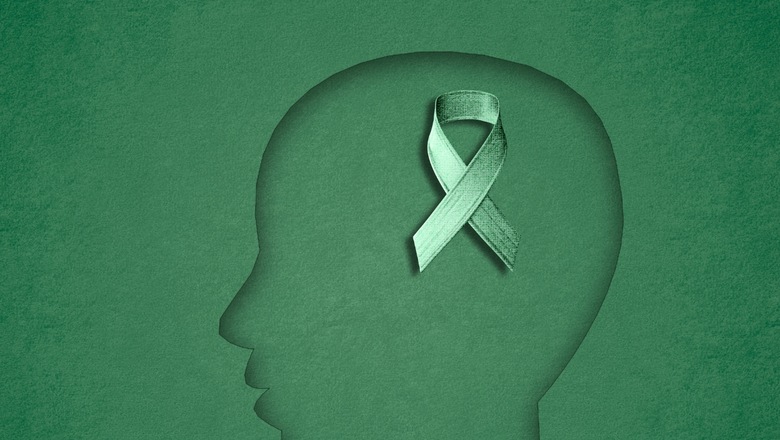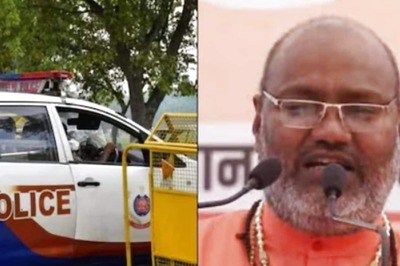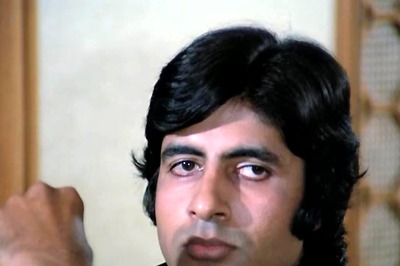
views
Today, October 10, is World Mental Health Day. It is a day to talk about mental health and show everyone that mental health matters. It’s also a day to let people know that “It is okay not to be okay” and “it is okay to seek help” for mental health conditions, no matter what you’re going through. The WHO’s theme for this year’s World Mental Health Day is “Mental health is a universal human right”. As such, today is the day for countries, societies, and communities to rally and unite behind the theme of the day to improve knowledge, raise awareness, and drive actions that promote and protect everyone’s mental health as a universal human right.
Wake-up time for India, that is Bharat
What is true for the world is truer for India, that is Bharat. Truth beckons; it is a wake-up call for the Indian nation. It is truly saddening to note that 45 years have elapsed since the Alma-Ata Declaration of 1978 (by all member countries of WHO including India), but in India, that is Bharat, even today, despite the country having framed world-best-practices Mental Health Care Policy, 2014, and Mental Health Care Act, 2017, the two have faltered in such a way at the implementation that even today seriously mentally ill people are constitutionally branded non-citizens, “Persons of Unsound Mind”, and are proscribed from their basic human rights by most statutes.
I consider it apt to remind the policy framers and guardians of the basic human rights of the country of the basic tenet of the declaration of the Alma-Ata Conference:
“The Conference strongly reaffirms that health, which is a state of complete physical, mental, and social well-being, and not merely the absence of disease or infirmity, is a fundamental human right and that the attainment of the highest possible level of health is a most important world-wide social goal whose realisation requires the action of many other social and economic sectors in addition to the health sector”.
Make no mistake, every Indian citizen, whoever and wherever he/she is, at the palatial mansions at the top of the pyramid, or homeless, on the street at the bottom of the pyramid, has a basic fundamental right to the highest attainable standard of mental health. This includes the right to be protected from mental health risks, the right to available, accessible, acceptable, and good quality care, and the right to liberty, independence, and inclusion in the community.
1 in 7 Indians living with mental health conditions
Good mental health is vital for overall health and well-being. Despite that, whether one believes the findings of India’s first National Mental Health Survey (2016) or the study of the reputed medical journal Lancet (Indian Council of Medical Research in Lancet Psychiatry, “The burden of mental disorders across the states of India: the Global Burden of Disease Study 1990-2017), at least one in seven Indians is living with some mental health condition, with humongous personal, familial, societal, and national consequences. And such consequences are both social and economic.
I will return to it a bit later.
Ground realities worsening fast
It is pertinent to note that both the National Mental Health Survey and the Lancet study are sample surveys, based on half-baked information in a country where mental illness is shrouded in secrecy with extremity of stigma, discrimination, and profiling of the mentally ill, but both converge on the same finding. What is more worrisome is that the proportional contribution of mental disorders to the total disease burden in India has almost doubled since 1990.
But if for a moment I assume that the data set of the above studies is reliable and valid, even then they represent the pre-Covid reality and it is widely accepted that the curse of mental illness is worsening fast, while we as a nation continue to look askance on the other side.
Three-part narrative
Truth beckons that the whole subject matter of mental illness in India continues to the neglected while the ground realities are exacerbating rapidly. On the eve of this year’s World Mental Health Day, I present my three-part narrative for a radical transformation of mental health care in the country.
Part one, the current piece, focuses on the “Economic Cost of Mental Illness in India”. I postulate that X$ investment in mental health yields 4X$ throw forward benefit to the economy.
Part two will focus on the horrendous deficit/gap in the availability and accessibility of treatment for mental health conditions in the country with particular reference to the poor. It will provide a bird’s eye view of how National Mental Health Programme (NMHP) and District Mental Health Programme (DMHP) have comprehensively failed to stem the tide of fast exacerbating mental health conditions and will create the pathway for how mental health care facilities must come out of the closet of asylums and why and how mental health care must be universalised at the primary health care level.
And part three of the narrative will be an “Open Letter to Prime Minister Narendra Modi”, exhorting him to immediately create a separate “Ministry of Mental Health and Mental Well Being”, because the curse of mental illness has already spread its tentacles so deep and wide that nothing less will work. It is worth noting that a separate ministry is the last chance to properly implement the salient provisions of global-best-practices India’s Mental Health Care Act, 2017, which was passed by both Houses of Parliament unanimously.
In the current piece, I humbly posit that unless mental health care is universalised in the country and its availability and accessibility are fast-tracked on a war footing, the country will fail to harness the “whole mind” of its citizens with humongous economic costs. Worse, as mental illness largely and increasingly impacts adolescents and the young of the country, if immediate action is not initiated to tame the beast, the demographic dividend of the country will soon turn into a demographic curse.
But before I move further, it is time to go down memory lane to circa 2009 and 2010.
Injecting a personal note
One, timeline circa 2009, October 11, a day after World Mental Health Day. After a microscopic examination of the print media, visual media, and then nascent-stage social media, I found the discourse on mental health conspicuously absent in the country. The stigma around mental illness was so deeply rooted in the country then, that the subject was simply taboo to discuss, forget about creating awareness about the fact that “It is okay not to be mentally okay”.
I was so dejected at the state of India, that is Bharat then, that I was forced to “dare to bare” my own incurable life-sapping fight with the alternate splintering flameout of mania and deadening bouts of depression and allow the noted journalist (and now a celebrated author) Samanth Subramanian to do a one-and-a-half page cover story in prominent business newspaper Mint, titled “Akhileshwar Sahay- Life Lessons from One Man’s Fight with Bipolar Disorder”.
Unlike today, when talking about one’s mental illness even by celebrities is becoming a fashion, I became the first known Indian who dared to bare about a life accursed with the beast of mental illness at a time when it was a completely taboo subject. It was akin to illuminating the light by burning the candle of my life from both ends. And indeed, I eventually succeeded in bringing the subject matter of mental illness from the closet of the black box to the national mainstream but only after paying a humongous personal, professional, and familial cost.
Two, on June 1, 2010, when I wrote an open letter to then Prime Minister Dr Manmohan Singh, “Economic Cost of Mental Illness”, in the form of an Op-Ed editorial page article in The Economic Times, mental illness was such a taboo in the country that despite fullest recourse to Google and journals, I could not lay my hands on even one study to corroborate my findings.
Nonetheless, based on limited studies from developed countries, and some literature from WHO, I concluded the following: “One, my aim is definitely not to elicit your sympathy or empathy for the mentally ill Dr. Singh. Assuming we ascribe zero value to the human costs of psychiatric illness, the economic costs themselves — both direct and indirect — are staggering. Given the dearth of even homegrown etiological and epidemiological studies of mental illness in India, I have relied on external studies to analyse the complex issue of its economic and financial implications. Nevertheless, they do provide insight and lessons for informed public policymakers because mental illness is an economic deflator costing 2-3% of the GDP of India annually.
Two, by 2020, one member of every family in the country will be afflicted by mental illness. We need to combat this menace, maybe with a touch of Manmohanomics. The present dysfunctional paradigm that perpetuates the incarceration of sufferers needs to go. The WHO program provides some hope — for every $1 million invested in mental care around the world, one can gain millions of years in terms of healthy human lives. The payback period is low and the rate of return exponentially high. You can make it happen, Mr. Prime Minister.”
Back to circa 2023: Prime Minister Modi – It is action time
Today, when I look back at my prophecy from 13 years ago, I am humbled. Assuming an average family size of seven (including parents), today one person in every household suffers from some form of mental illness. And even today, not many studies are there in the country that measure the economic and financial cost of mental illness. But whatever little is available indicates that the economic and financial cost is not only going up but is crippling those suffering from mental illness and their caregivers. Here are a few numbers if needed: One, a dated report from the World Health Organization (WHO) estimates that the total burden of mental health problems in India is 2,443 disability-adjusted life years (DALYs) per 100,000 population. The age-adjusted suicide rate per 100,000 population is 21.1. The economic loss due to mental health conditions, between 2012-2030, as per WHO, is estimated at USD 1.03 trillion. It is a staggering number.
Two, the World Health Organization (WHO) Health Financing Profile for 2017 shows that 68% of the total expenditure on health in India was paid out-of-pocket (OOP), a significantly high figure when compared to the world average of 18.2%. And when it comes to mental illness, the OOP is significantly higher.
Three, the 75th Round of the National Sample Survey (NSS), a nationwide survey conducted by the Government of India during 2017-18 found the average cost of hospitalisation for psychiatric and neurological ailments was ₹26,843, with an average cost of ₹7,235 for care in public hospitals and ₹41,239 for private hospitals This is comparable to the cost associated with cardiovascular and musculoskeletal ailments.
Four, in 2022, the consulting firm Deloitte Mental Health Survey estimated that poor mental health amongst employees, particularly depression and anxiety, costs Indian employers around US$14 billion yearly,
Five, another study, “Catastrophic Health Expenditure and Poverty Impact Due to Mental Illness in India”, published in the Journal of Health Management, that highlights the financial impact of mental healthcare and the need for financial risk protection for households with members suffering from mental illness has a further shocking revelation which suggests that for families with a member suffering with a mental illness, nearly on an average a fifth of the total household monthly expenditure is spent on the healthcare. The out-of-pocket expenses in the case of mental illness are so high that households with mentally ill family members slipped below the poverty line, the study found.
I submit humbly that all the above numbers are half-baked, based on limited samples, and are dated. None of the above studies are truly representative and none of them have been carried out post Covid-19. Worse, the direct costs (cost of consultation, which in any case is very high for psychiatric ailments, cost of medicines, cost of tests, and cost of travel) are truly insignificant when compared to the real indirect costs (loss of opportunity, loss of wages to the patients, and loss of wages to the caregivers).
Economic cost of mental illness staggering
We Indians are not data-driven. Rather we either fear or ignore data. And if inconvenient data emerges even from limited research, we prefer to brush it under the carpet. My simplistic calculation says that the population of India is increasing. And we are already the most populous country in the world. Worse, the number of Indians suffering from mental illness both in absolute terms and as percentage of population is rising sharply.
In view of the abovementioned, I revise my 2010 numbers of mental illness deflating India’s GDP from 2-3% to 3-4%, and invite erudite readers and policymakers to challenge my assumptions. My new numbers are based on sound logic. As the Indian economy goes to a higher level, from the fifth largest economy to the third largest in the world in 2028, and as the per capita income of Indians goes up, so does the per capita economic cost from mental illness.
And in the absence of credible Indian data, I postulate that soon the economic cost of mental illness in India will be approximately 4% of the GDP, taking a cue from the most recently assessed Economic Cost of Mental illness for OECD countries on June 08, 2021, the OECD report “A New Benchmark for Mental Health Systems: Tackling the Social and Economic Costs of Mental Ill-Health”. The report has credibly assessed the economic cost at more than 4% of the GDP already.
Akhileshwar Sahay is Principal Instigator of Whole Mind India Foundation (WMIF) dedicated to changing the life and times of the Mentally Ill in India and also Principal Instigator of Action Group-Mission Zero Suicide India. He was a member of Government of India’s Mental Health Policy Group and a past member of Central Mental Health Authority (CMHA). Sahay has lived life with incurable mental health condition Bipolar Disorder. He works as President, Advisory Services of Consulting Company BARSYL. Views expressed in the above piece are personal and solely that of the author. They do not necessarily reflect News18’s views.



















Comments
0 comment